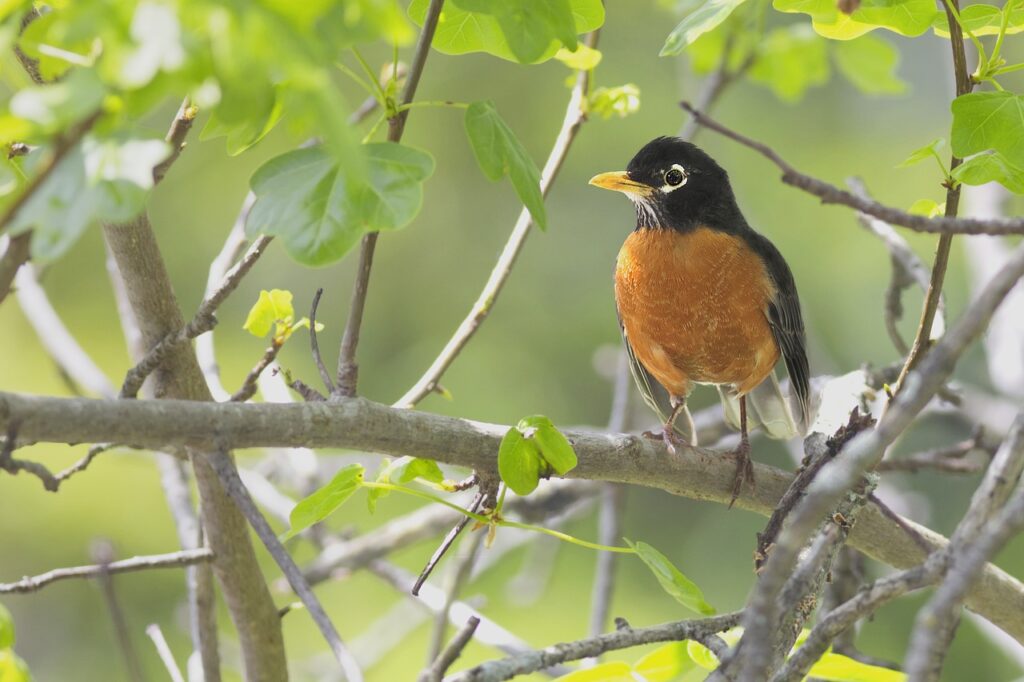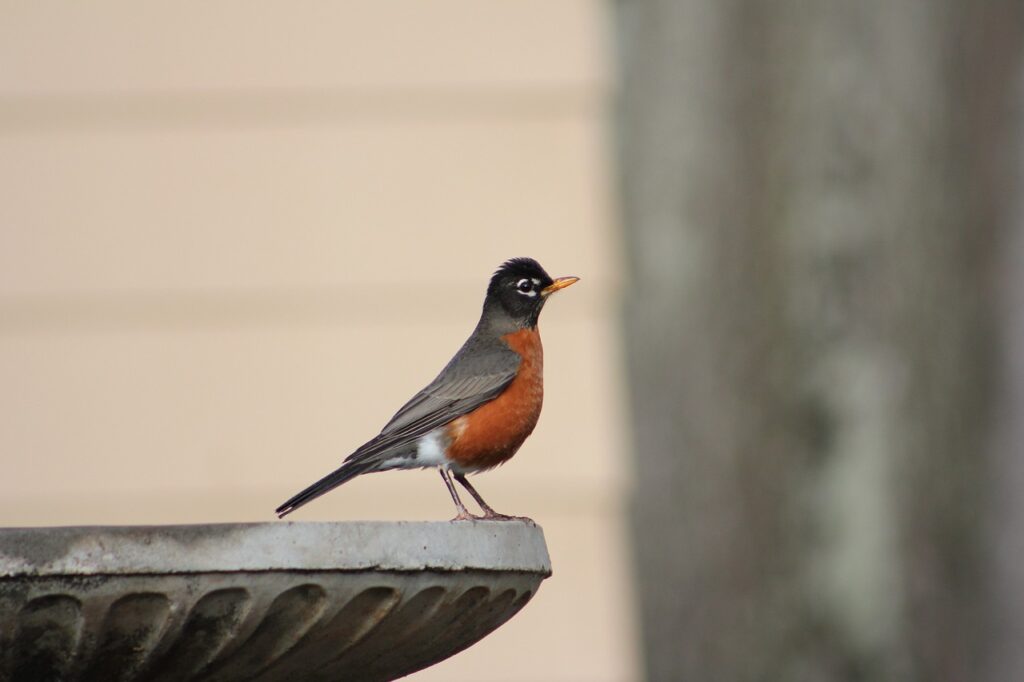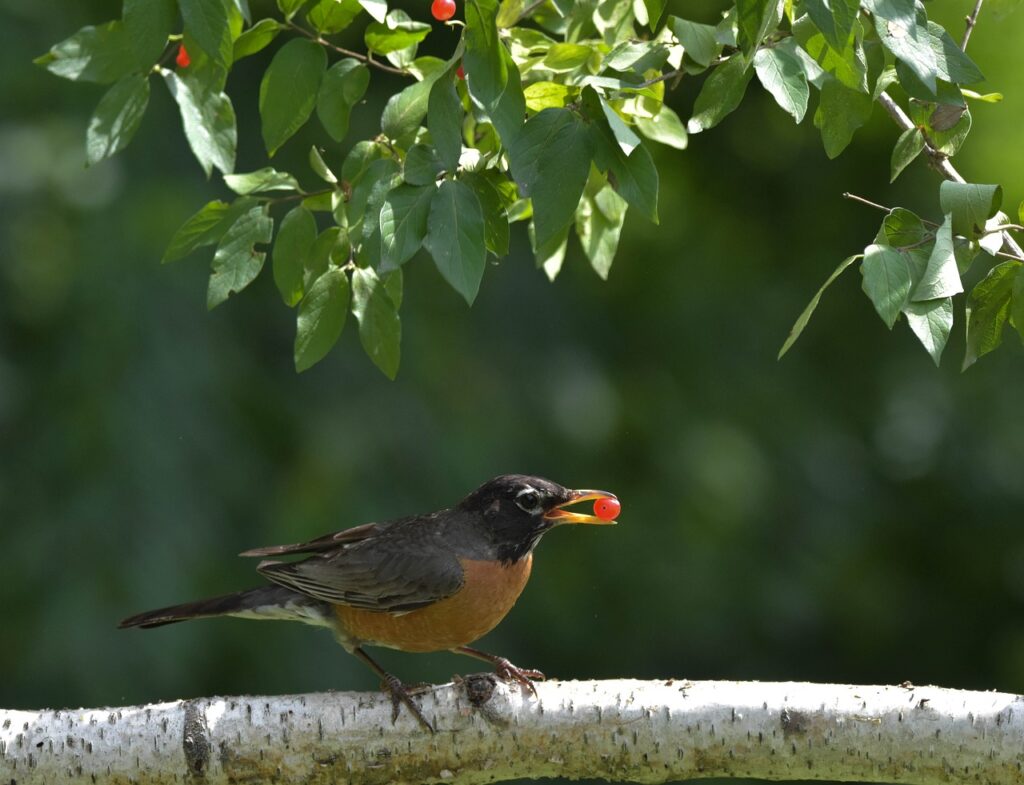The songs and sounds of American Robins early in the morning is a sure sign of spring for many across North America. In their range, you’ll find Robins darting across grass in your yard or local park in hunt of earthworms to eat. Many people also don’t realize that a lot of Robins stick around in winter climates year-round and don’t migrate south.
If you have a bird feeding station, you might be wondering if a Robin will stop for a snack. My quick answer: Probably not. However, there are things you can do to increase your odds of having them stop by your yard.
Do Robins Visit Bird Feeders?

I’ll be honest, I’d love Robins to visit my feeders, but I haven’t had much luck in my years of bird feeding so far. However, it’s not impossible. There are a few sources I found online claiming you can get one at a feeding station on occasion by:
Offering live mealworms in a ground or tray feeder during the spring nesting season (Wild Birds Unlimited).
Putting out chopped fruit like apples and berries on a ledge or ground feeder (Oregon State University). This can be especially helpful if you have wintering Robins when food is sparse.
Robins don’t eat bird seed. So, live mealworms and chopped fruit offered near the ground during the spring is your best bet.
Related Content: 10 Birds that Love Eating Mealworms (With Photos)
Get Robins to Visit Your Yard – Have a Water Source

Robins may not typically visit bird feeders, but they’re big fans of bird baths and water sources.
Putting out water in a heated bird bath is helpful for robins wintering in your neighborhood. Consider buying one from a local retailer or shopping around online. Not only will you draw in Robins, all birds appreciate a water source.
Put Out a Nesting Platform

Robins aren’t shy about building nests on or near human structors. We had a robin build a nest under the deck of my childhood home every spring like clockwork.
Robins tend to look for sturdy platforms or brush/trees to place their nests. Your best bet is to put out a nesting platform. You can build a shelf to attach to a tree or structure, or buy one online.
Robins are highly unlikely to use a nest box. They prefer a shelf space with an opening.
Avoid or Reduce Your Use of Pesticides
As mentioned earlier, Robins like to poke around eating earthworms. If you put pesticide down on your lawn regularly, you’ll likely kill off a lot of their natural food sources. You can poison Robins directly or indirectly if they eat a worm poisoned by pesticides.
Consider natural alternatives like hand weeding your yard, or participate in No-Mow May to help your yard ecosystem thrive. Even small efforts here can make a big difference for all the natural wildlife in your yard, Robins included.
Put in Native Plants and Trees in Your Yard

Robins love to eat berries off native plants. This is a much more long term, but consistent bet to get Robins visiting versus a bird feeder. Check your local sources for native plants in your area, but some to consider, according to Oregon State University are vine maple, currant, ocean spray, and California wax myrtle.
There you have it! Robins aren’t likely to visit your bird feeder, but if you install a bird bath, native plants, and reduce your pesticides use, you’ll dramatically increase your chances of having them visit your yard.
Disclaimer: Some links found on this page are Amazon affiliate links. If you click an affiliate link and make a purchase, I might earn a commission. As an Amazon Associate I earn from qualifying purchases.

Pingback:Discover the Most Common State Birds in the United States - BIRD BITES
Pingback:How to Attract 33 Wisconsin Birds to Your Feeders - BIRD BITES
Pingback:How to Attract 29 Missouri Birds to Your Feeders - BIRD BITES
Pingback:How to Attract 30 Arkansas Birds to Your Feeders (With Photos) - BIRD BITES